SUPERCHARGE YOUR ONLINE VISIBILITY! CONTACT US AND LET’S ACHIEVE EXCELLENCE TOGETHER!
In the fast-evolving world of web development and digital marketing, how your website renders content isn’t just a technical concern—it’s a strategic one. The way your pages are delivered to users and search engines can significantly affect everything from bounce rates and engagement to how (or if) your content appears in Google search results.
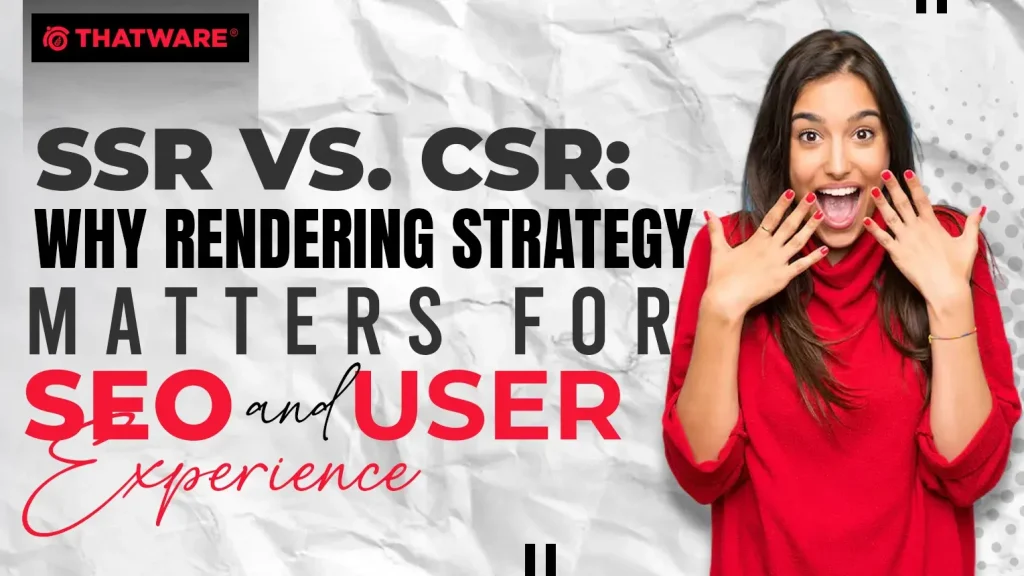
Whether you’re a developer tasked with site performance optimization or an SEO specialist laser-focused on crawling and indexing, understanding the nuances of Server-Side Rendering (SSR) versus Client-Side Rendering (CSR) is no longer optional—it’s essential.
This in-depth breakdown will help you grasp the mechanics, pros, cons, SEO implications, and auditing best practices for both rendering approaches. By the end, you’ll have a clear roadmap for choosing the right rendering method for your business goals—and optimizing your web presence for users and search engines alike.
What is Server-Side Rendering (SSR)?
Server-Side Rendering (SSR) refers to the process of generating and serving fully-rendered HTML content directly from the web server in response to a user’s request. When someone clicks a link or visits your site, the server processes that request, compiles the necessary data, and returns a complete, ready-to-view HTML document.
This is fundamentally different from CSR, where much of the page’s content is assembled in the user’s browser after the initial page load using JavaScript.
With SSR:
- The HTML document is complete when delivered.
- All critical content (text, images, metadata) is embedded in the source code.
- The browser simply displays the page—it doesn’t have to build it from scratch.
Why SSR Matters for SEO
While SSR offers technical performance benefits, its most significant impact lies in SEO visibility and discoverability.
| Benefit | Description |
| ✔ Better Crawling | Bots can access content immediately |
| ✔ Improved Indexing | Less chance of missed or delayed content indexing |
| ✔ Faster Load Time | Reduces bounce rates, improves Core Web Vitals |
| ✔ Structured Data Availability | Metadata, schema, and other SEO signals are more visible |
Here’s how it gives your website a competitive edge in the search engine arena:
1. Improved Search Engine Crawling
Google and other search engines do crawl and render JavaScript—but it’s neither instant nor always reliable. JavaScript-rendered content (as in CSR) may be delayed or even skipped altogether if:
- Googlebot experiences resource timeouts,
- There are script errors,
- Or JavaScript execution exceeds the crawl budget.
With SSR, you sidestep these issues entirely.
Why it matters:
Because SSR delivers complete HTML upfront, search engine bots can immediately access your content—no scripts, no delays, no dependencies. This increases the likelihood of your pages being fully crawled, properly indexed, and ranked accurately in SERPs.
2. Faster First Contentful Paint (FCP)
SSR has a significant advantage when it comes to performance metrics—especially First Contentful Paint (FCP), which measures how quickly users see visual feedback from a web page.
In SSR:
- Content is ready to display almost instantly.
- Users don’t wait for JavaScript to load and execute.
Result:
Faster perceived loading times, smoother user experience, and better Core Web Vitals scores—factors that now influence Google’s ranking algorithm.
3. More Reliable Indexing
Let’s be honest: relying on search engines to process your JavaScript perfectly every time is a gamble. Even though Google has improved its rendering engine, issues like broken scripts, timeouts, and missing dependencies still cause problems.
CSR-heavy websites often experience incomplete or delayed indexing because the critical content isn’t available in the initial HTML.
SSR solves this.
By presenting all content in a single server response, it ensures that search engines have direct access to what matters most—your page’s core information.
4. Enhanced Metadata and Structured Data Visibility
Metadata—such as <title>, <meta description>, and Open Graph tags—plays a vital role in how your pages appear in search results and social previews. Likewise, structured data (using JSON-LD and schema.org vocabularies) enables rich snippets like review stars, product prices, and FAQs in search results.
With CSR, metadata is often injected after the page loads using JavaScript. This introduces risk:
- Search engines might miss it.
- Rich results might not trigger.
With SSR:
- Metadata is baked into the HTML.
- Structured data is readily available.
- You increase your eligibility for enhanced search listings and improve click-through rates (CTR).
SSR in the Real World: Who Should Use It?
SSR is ideal for websites that rely heavily on SEO and fast load times:
- E-commerce platforms (product discovery and rich snippets)
- News publishers (content indexing and freshness)
- Corporate websites and blogs (immediate content visibility)
- Local service providers (geo-targeted search results)
Even Single Page Applications (SPAs) can be optimized with hybrid frameworks like Next.js or Nuxt.js, which offer SSR capabilities alongside client-side interactivity.
How to Audit Your Site for SSR Readiness
Not sure if your site is using SSR—or if it’s doing it correctly? Here’s a quick audit checklist:
✅ View Page Source
Right-click > “View Page Source” in your browser. If you see meaningful content (headings, product names, text) in the raw HTML, your site likely uses SSR.
❌ If the HTML is mostly empty or filled with <div id=”app”></div>, it’s relying on CSR—and may need attention.
✅ Fetch as Google (in Search Console)
Use the “URL Inspection Tool” to test how Google sees your page. Look for missing or incomplete content in the rendered HTML.
✅ Check Load Times
Use tools like PageSpeed Insights or Lighthouse to measure First Contentful Paint and Time to Interactive.
✅ Validate Structured Data
Use Google’s Rich Results Test to ensure your structured data is being picked up correctly.
What is Client-Side Rendering (CSR)?
Client-Side Rendering (CSR) is a modern web rendering technique that relies on the browser — rather than the server — to construct and display the content of a webpage. Unlike Server-Side Rendering (SSR), where the server sends a fully-rendered HTML page, CSR delivers a minimal HTML shell initially, and then loads the rest of the page’s content dynamically using JavaScript.
Popular JavaScript frameworks like React, Vue, and Angular have made CSR the default rendering strategy for many web applications, particularly those requiring dynamic user interactions. When a user visits a CSR-based website, the browser downloads the HTML shell and then executes JavaScript to fetch and display the content, including text, images, and metadata.
This method allows for highly interactive user experiences, and it’s especially favored in single-page applications (SPAs), dashboards, and real-time tools. However, CSR also comes with a unique set of challenges—particularly when it comes to SEO and performance.
CSR Challenges for SEO
While CSR provides a snappy and app-like experience to end-users, it can cause significant issues when it comes to how search engines perceive and interact with your content.
| Problem | Explanation |
| Delayed Content Rendering | Search engine bots may not wait for the JavaScript to render content. |
| Incomplete Indexing | If bots can’t “see” the content, it might not get indexed. |
| Poor Performance Metrics | Slower initial load times can hurt Core Web Vitals and SEO rankings. |
| Inconsistent Metadata | Title, description, and schema may not be visible at initial load. |
Let’s break down the key challenges:
1. Delayed Content Rendering
One of the biggest drawbacks of CSR is that the actual content of the page is not present in the initial HTML. This means that when search engine bots like Googlebot attempt to crawl the page, they may only see an empty or skeletal HTML shell — unless they wait for JavaScript to fully execute.
Unfortunately, not all bots wait, and even Googlebot may prioritize crawling HTML over executing complex scripts, which can delay or entirely miss content.
2. Incomplete Indexing
If bots cannot render the JavaScript properly or if it takes too long to load, essential page content might never get indexed. This results in search engines not showing your content in search results — a major blow to your website’s visibility and traffic.
Pages with content injected solely via JavaScript are especially at risk of this issue. The result? A beautiful page that human users love but search engines can’t see.
3. Poor Performance Metrics
CSR tends to perform poorly in Core Web Vitals, especially:
- First Contentful Paint (FCP) – when users see the first visual element.
- Largest Contentful Paint (LCP) – when the main content becomes visible.
- Time to Interactive (TTI) – when users can interact with the page.
All of these metrics tend to lag with CSR because of the time JavaScript takes to load and render the DOM. Poor scores here not only degrade user experience but can also hurt your rankings on Google.
4. Metadata Inconsistencies
In SSR, metadata like <title>, <meta name=”description”>, and structured data are served directly in the initial HTML. In CSR, these are often injected through JavaScript. If the bots don’t execute the scripts correctly or in time, they may miss this metadata entirely, leading to poor representation in search results.
For example, your site may appear with generic or incorrect titles and descriptions, or be ineligible for rich results due to missing schema markup.
SSR vs. CSR: A Quick Feature Comparison
Here’s a head-to-head comparison of SSR and CSR to highlight their strengths and limitations:
| Feature | Server-Side Rendering (SSR) | Client-Side Rendering (CSR) |
| First Load | Fast – content appears immediately | Slow – blank shell before rendering |
| SEO | Highly SEO-friendly | Needs extra optimization |
| Indexing | Immediate and reliable | Potential for missed content |
| Metadata | Always visible in initial HTML | Might not load in time |
| User Experience | Great for content-heavy websites | Ideal for dynamic, app-like experiences |
| Performance | Faster FCP and LCP | Slower unless well-optimized |
| Use Case | Blogs, news sites, eCommerce pages | Single-page apps, dashboards, real-time tools |
How to Audit a Website’s SSR or CSR Rendering Strategy
Understanding how a website renders its content is essential for identifying and fixing SEO issues. Whether you’re an SEO specialist, developer, or marketer, performing a rendering audit can help improve both visibility and user experience.
Step 1: Use the SEO Render Insight Tool (Chrome Extension)
This free Chrome extension is one of the simplest ways to identify rendering types.
How it works:
- Loads a page twice — once with JavaScript enabled and once without.
- Highlights content differences.
- Clearly indicates which parts are SSR (visible in both) and which are CSR (only visible after JS execution).
This is a fast and intuitive way to spot hidden content that search engines might be missing.
Step 2: Compare “View Page Source” vs. “Inspect Element”
Manual method:
- Right-click on a page and select “View Page Source”. This shows the raw HTML sent from the server.
- Then right-click again and choose “Inspect” → go to the Elements tab. This shows the DOM after JavaScript execution.
Compare both views. If content exists in Inspect Element but not in Page Source, it’s being rendered client-side.
Step 3: Use Google Search Console (GSC)
The URL Inspection Tool in GSC is invaluable for understanding how Googlebot sees your page.
Steps:
- Enter a URL.
- Click “View Crawled Page.”
- Check if all content and metadata appear in the rendered HTML.
Missing content means CSR might be hurting your SEO.
Step 4: Use “Fetch as Google” in SEO Tools
Tools like:
- Screaming Frog SEO Spider (JavaScript rendering mode)
- Sitebulb
- Ahrefs and SEMrush
These tools emulate how search engines render your site and can flag issues like missing headers, metadata, or empty content blocks due to CSR.
Step 5: Measure Core Web Vitals
Use Google PageSpeed Insights or Lighthouse in Chrome DevTools.
Look for:
- High Time to First Byte (TTFB)
- Slow First Contentful Paint
- Poor Cumulative Layout Shift (CLS)
CSR-heavy pages often perform worse unless optimized with strategies like code-splitting, lazy loading, or server-side hydration.
When Should You Use SSR or CSR?
Choosing between Server-Side Rendering (SSR) and Client-Side Rendering (CSR) isn’t a one-size-fits-all decision. It depends on your website’s goals, the type of content you serve, your audience’s behavior, and your SEO strategy. Let’s break down when you should use SSR or CSR — and why the right choice can dramatically influence your site’s performance and search visibility.
Use SSR When:
1. Your Website Relies Heavily on Organic Traffic from Google
If your primary goal is to attract visitors through search engines, SSR is the clear winner. With SSR, all your website content is readily available in the initial HTML response — meaning Googlebot and other crawlers can easily access, crawl, and index your pages.
Search engines reward sites that are easy to read and quick to load. By pre-rendering content on the server, SSR gives search engines exactly what they need without the guesswork or delays caused by JavaScript rendering. This makes SSR particularly powerful for content marketing websites, SEO-driven eCommerce platforms, and lead-generation landing pages.
2. You Manage a Content-Heavy Site (Blog, News Portal, E-Commerce)
Content-rich websites — like blogs, online newspapers, and eCommerce stores — benefit greatly from SSR because they require fast access to a lot of information. In such cases, users and bots need the full content structure delivered upfront. Waiting for JavaScript to render dozens or hundreds of content items can be slow and unreliable.
Imagine a user clicking on a news article or product detail page — they expect to see content instantly. If it takes several seconds just to render the page skeleton, they might bounce. SSR minimizes that risk by ensuring content appears immediately.
3. Core Web Vitals and First Impressions Are Priorities
Google’s Core Web Vitals are critical metrics for SEO and user experience. Metrics like First Contentful Paint (FCP) and Largest Contentful Paint (LCP) are directly impacted by how quickly the content appears on the screen.
Since SSR loads a fully-rendered page from the start, it typically performs better in these areas compared to CSR, which often sends a blank HTML shell and relies on JavaScript to render everything. Faster load times not only improve SEO rankings but also reduce bounce rates and enhance overall user engagement.
4. You Want Stable, Consistent Metadata and Rich Snippets in Search Results
Metadata such as <title>, <meta description>, and structured data (schema.org) plays a key role in how your pages appear in search results. SSR ensures this data is available right away — before any JavaScript executes — making it more reliable for bots and more likely to generate rich snippets in search listings.
With CSR, metadata is often injected via JavaScript, which can result in inconsistent indexing or missed opportunities for enhanced SERP (Search Engine Results Page) visibility.
Use CSR When:
1. You’re Building a Highly Dynamic, Interactive Web App
If your website behaves more like an application than a static site — think dashboards, real-time analytics tools, or messaging platforms — CSR offers the flexibility and responsiveness users expect. Client-side frameworks like React, Angular, and Vue excel at creating seamless, dynamic interfaces.
These use cases don’t typically rely on search engine traffic for success. Instead, they prioritize interactivity, fast state changes, and fluid navigation — areas where CSR shines.
2. You Manage User Dashboards or Single Page Applications (SPAs)
SPAs are designed to load content dynamically within a single HTML page. This reduces full page reloads and makes the experience smoother for logged-in users. CSR is ideal here, as it allows for real-time content updates, modular UI components, and efficient client-side routing.
If your website’s primary function is behind a login (such as admin panels, control dashboards, or internal tools), SEO is less of a concern — making CSR the logical choice.
3. SEO Is Not a Primary Traffic Source
If most of your traffic comes from direct visits, email marketing, paid ads, or mobile apps, SEO might not be mission-critical. In such cases, CSR may suffice without compromising user experience or business outcomes.
However, it’s still wise to ensure that essential public-facing pages (like your homepage, landing pages, or product pages) are SEO-optimized, which brings us to the next point.
4. You Can Invest in Pre-Rendering or Hydration Strategies
CSR doesn’t have to mean bad SEO — not if you’re smart about it. Pre-rendering tools and frameworks now allow you to generate static HTML snapshots of CSR content at build time. This process, known as Static Site Generation (SSG), helps bridge the gap between dynamic interactivity and crawlable content.
In addition, hydration techniques — where JavaScript “wakes up” the pre-rendered HTML — let you maintain interactivity without sacrificing performance or indexability. But be aware: these strategies add complexity and require careful implementation.
Hybrid Approaches: Best of Both Worlds
In many real-world scenarios, a mix of SSR and CSR is the most effective strategy. Fortunately, modern JavaScript frameworks offer hybrid rendering capabilities that let you choose the best rendering method for each page or even component.
Popular Frameworks That Support Hybrid Rendering:
- Next.js (React)
- Nuxt.js (Vue)
- Remix (React)
- Astro (Multi-framework)
Key Features in Hybrid Frameworks:
• Static Site Generation (SSG)
Pages are built as static HTML at build time and served via CDN. Great for blogs, landing pages, and documentation.
• Incremental Static Regeneration (ISR)
Allows for static pages to be updated incrementally — perfect for large sites that need real-time updates without full rebuilds.
• Server Components (React)
React Server Components enable developers to execute logic on the server while keeping the client-side lean and fast.
This hybrid approach provides maximum flexibility — you can render critical content on the server for SEO, while keeping dynamic, app-like features client-rendered.
Common Questions About SSR vs CSR Audits
Does Google Index JavaScript-Rendered Content?
Yes — but not always efficiently. Googlebot can execute JavaScript, but it does so after the initial crawl, and not all content may be processed correctly. For mission-critical SEO pages, server-rendered content is more trustworthy.
Can I Switch a CSR Site to SSR?
Absolutely. Many sites built with frameworks like React can transition to SSR by adopting Next.js. However, this isn’t always a plug-and-play change — it may require architectural adjustments, code restructuring, and SEO re-evaluation. But the performance and SEO gains often justify the effort.
Is Pre-Rendering a Solution for CSR SEO Issues?
Yes. Tools like Prerender.io, Netlify, or built-in framework features (like Next.js’s getStaticProps) allow you to pre-render pages, which delivers the SSR benefits without a full server-rendering setup.
Final Thoughts: Don’t Let Rendering Ruin Your SEO
The decision between SSR and CSR has wide-reaching implications for both SEO and user experience. It’s not just a development detail — it’s a strategic choice that can impact visibility, performance, and ultimately, your business success.
Here’s what you should remember:
- If your site needs to rank, load fast, and be crawl-friendly — SSR or pre-rendering is essential.
- If your site is highly interactive and SEO isn’t crucial — CSR works well, with smart optimizations.
- If you need flexibility — use a hybrid approach via modern frameworks.
And always run a rendering audit using tools like the SEO Render Insight Tool, Google Search Console, or PageSpeed Insights to ensure that bots — and users — see your content clearly and quickly.
Your rendering method could be the difference between being found or forgotten.
Now Here’s How We At ThatWare Do It –
Well, there are different ways to the same, but if we want to do it very quickly and easily, there is a Chrome extension available.
SEO Render Insight Tool

Here is the link: https://chromewebstore.google.com/detail/seo-render-insight-tool/ignachbibbeengfepmkeogegpfkigljc
Here are the steps to do the audit using the extension:
Step 1: Install the extension
Step 2: Click on the toggle button of the extension
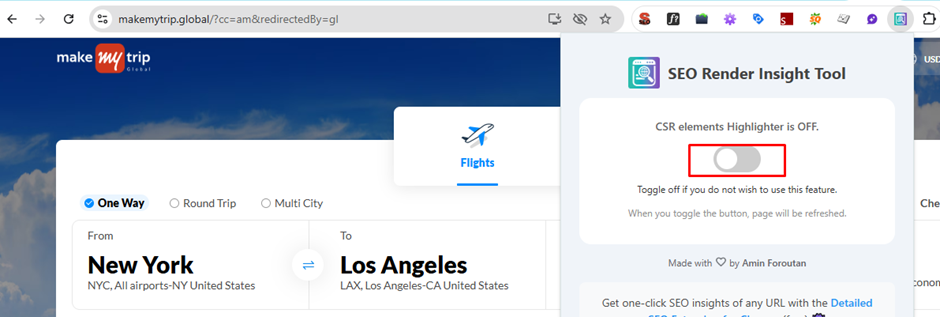
Step 3: You can see two colors for two different renderings
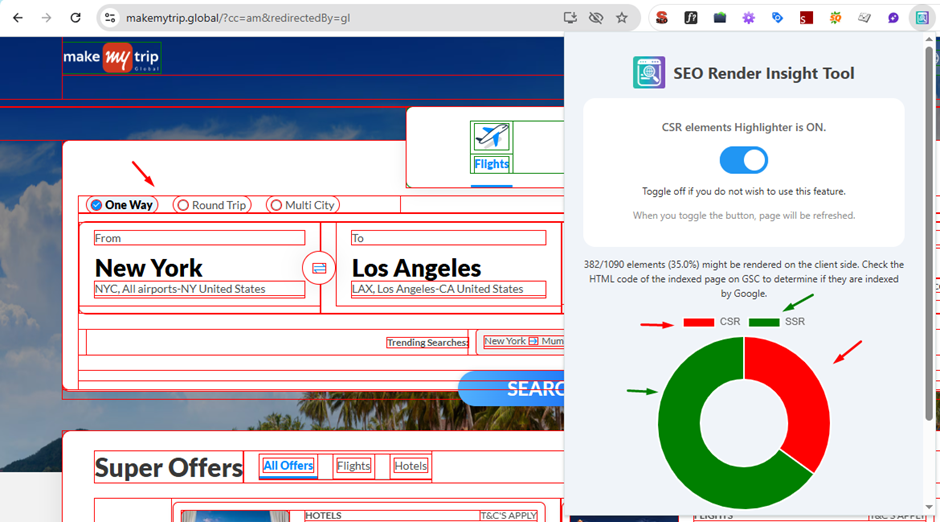
So, scroll the whole web page to load all the elements and then observe the rendering percentage,
Why are we doing the audit?
The primary purpose is to understand the rendering of each element of the page. Sometimes, we face issues regarding page indexing, or some content does not index, such as text, images, videos, etc.
If the content is serving all kinds of users, providing each of the content elements in SSR is recommended, which helps with indexing.
In this scenario for makemytrip website:
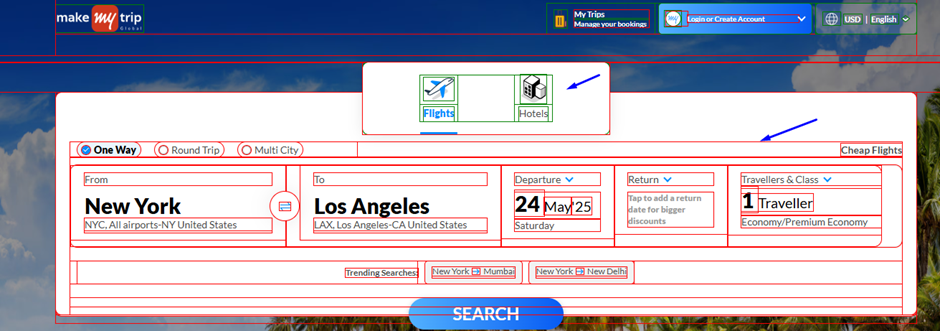
The element highlighted by the Green Color box is for all users, but the element marked as red depends on the specific type of user based on the location, so it is rendered on the client side to showcase the different results.
If we take another example:
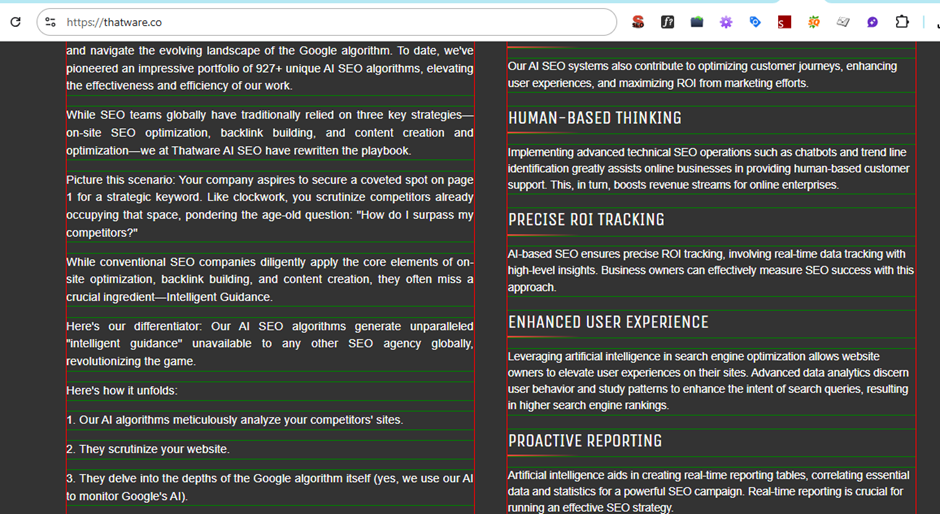
If we look at the content of the that are.co, these all serve as SSR because they are essential for all users and for indexing.
How can we check if a particular element of a page is indexed or not if its on CSR?
There are two effective options to check if a particular portion of content or any element is indexed.
1. Open Search Console.
Enter the URL of the page.
Click “View Crawled Page” or “Test Live URL.”
Click “View Source”.
Search (Ctrl+F) for the element/text.

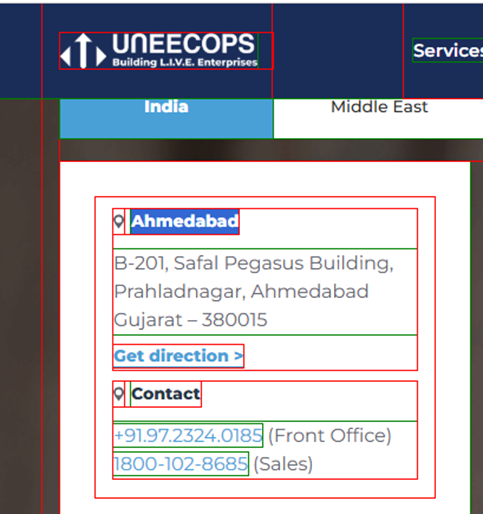

2. Go to Google.com.
In the search bar, type:
site:example.com “exact snippet from the page”
Replace:
- example.com with the actual domain.
- The quoted text with the unique content you copied earlier.
If it shows up in results:
- The content is indexed by Google.
If it does not show up:
- It is likely not indexed, especially if it’s only available after client-side JavaScript execution.
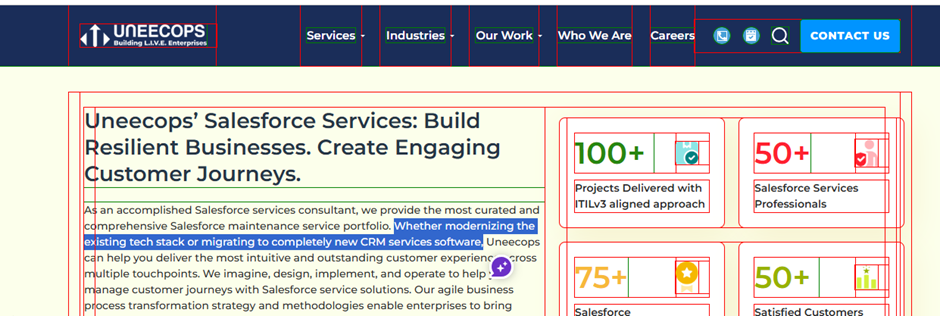

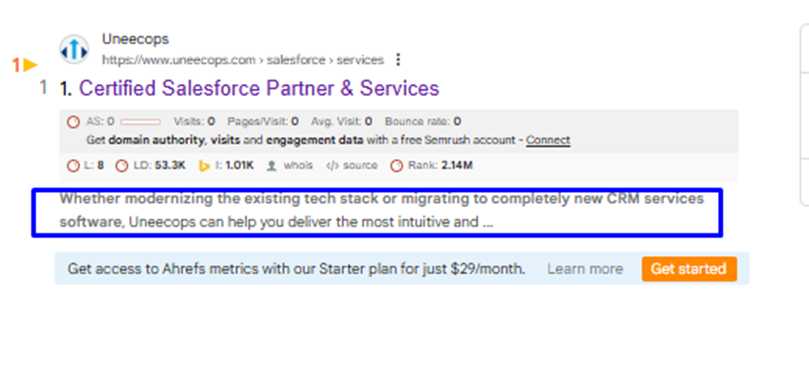

Thatware | Founder & CEO
Tuhin is recognized across the globe for his vision to revolutionize digital transformation industry with the help of cutting-edge technology. He won bronze for India at the Stevie Awards USA as well as winning the India Business Awards, India Technology Award, Top 100 influential tech leaders from Analytics Insights, Clutch Global Front runner in digital marketing, founder of the fastest growing company in Asia by The CEO Magazine and is a TEDx speaker and BrightonSEO speaker.

